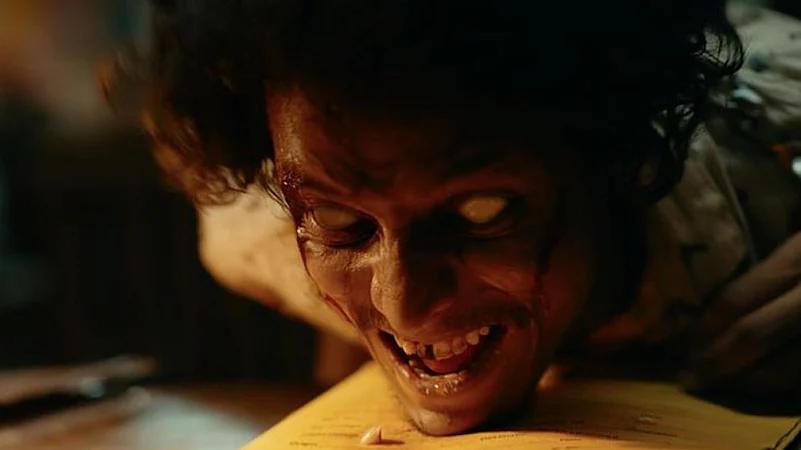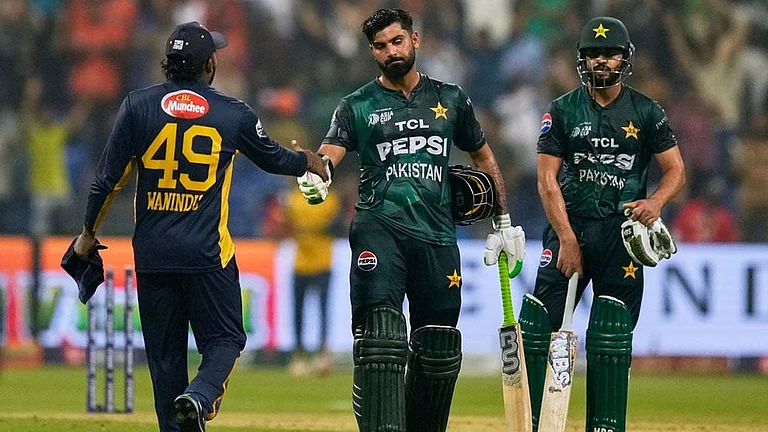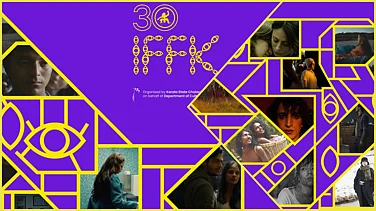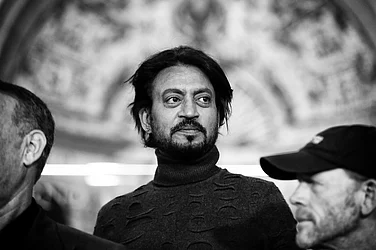The lives of a newly married middle-class couple, and a slum dweller who dreams of dignity for his people, come together when the town they live in, is struck by a zombie apocalypse! That’s the premise of Aditya Satpotdar’s recently released film ‘Zombivli’.
“The idea for the film really came the minute we were under the first lockdown. It hit me then only, that this is perfect scenario, because, mentally and emotionally, it felt like we were in a zombie apocalypse, caught up inside house and this virus taking over everything I ever wanted to do. IT wasn’t just me but, all of us who attempted the film, identified with that scenario,” says Aditya Sarpotdar.
Despite its apocalyptic themes, which make any film or series in this genre feel global, India has had seldom projects under this genre. Luke Kenny and Devika Singh’s ‘Rise of the Zombie’, Saif Ali Khan, Vir Das and Kunal Kemmu’s ‘Go Goa Gone’, Sajja Teja and Anandhi’s ‘Zombie Reddy’ and Netflix’s ‘Betaal’ and the third episode of the movie anthology ‘Ghost Stories’ are the only examples of projects based around zombies, that have done well, before the release of Saptodar’s ‘Zombivli’.
“Stories can’t be just about zombies. There has to be a local narrative. You connect with. Dombivlli, as a space, because it has a lot of interesting facets, like the civic crisis, the water crisis, it’s a highly densely populated area where a people of mixed group live. Now that, serves as the perfect backdrop for zombie attack scenario.,” he adds.
The film has been receiving rave reviews for neatly presenting a critique of the class divide, the rather clueless urban development projects and the prejudices of the rich against the slum dwellers, while vividly painting a picture of carnage that unfolds when a zombie outbreak begins in a hospital and reaches a slum, and the gated colony next to it.
“In such a cataclysmic event, one taps into human emotions, because at the end of the day it is all about human survival. People come from different backgrounds, different cultural and class structures, to unite to survive through an apocalypse,” he says.
‘Zombivli’ is one of the many recent examples, that however point towards a turning tide in the evolution of horror titles. Makers are focussing on presenting supernatural stories, myths legends and lore from within the country, by using universal tropes, such as jump scares, to create titles in this genre.
The 2017 Tamil-language film ‘Aval’ directed by Milind Rau, is a scary story of two families haunted by ghosts, set in Himachal Pradesh, was lauded by critics from across the country not only for the usual tropes associated with a horror film like shock, horror, fear and even borderline nauseousness, but also for not exploiting religious beliefs, use sub-standard special effects or melodrama, which is often the criticism for any horror film in India.
“People used to say that Alfred Hitchcock used to wait outside the theatres, to see how people would react to jump scares, or those terrifying moments in his film. I think there is something really gratifying to see people react to that moment, that you have built up, it is not an easy genre to attempt. There is a lot of detailing that goes into making a good horror film or a show. One slight second of wrong edit, and you lose that moment and the entire thrill of it,” he says.
‘Aval’ is not just a conventional horror film with a humans-vs-devil storyline, but in fact has a good- spirits-vs-bad-spirits vibe, which results in the two families getting caught in this supernatural tug of war, after the daughter of one of the couples who had just moved into the new (haunted) house, invites unwanted elements inside.
“There’s a 15-minute-long scene in black and white, which is in Chinese language that explains the backstory of the ghosts. Everyone has told me that is the soul of the film. No one, in a mainstream horror film would even think about doing such a thing. But it was important to the story, and that’s why it was done,” says Rau.
“‘Aval was made in Hindi and Tamil, and later dubbed in Telugu as well. Yes, it wasn’t promoted well in the hindi-speaking belt, but when I went to Mumbai, I saw how people were excited for it. Even the Telugu version, it took a life of its own and went house-full for days,” he adds.
The dependence on stories from the country, without looking at adapting films from successful movies industries like the Japanese, Korean or Hollywood, has also pushed makers, to get the right cast.
“Every place generally has its own legends, own local horror stories, local hunted place, local haunted house, even ‘Stree’ was based on a Bengaluru local legend - 'Nale Ba', which means Oh Woman Come tomorrow'. So, stories of horror have been a part of our culture. Hinterland as it is not urbanised form an interesting set up for a horror film, which in turn gives it a local flavour, means something new and something fresh for people to watch in the cities and something local for people from the hinterland, which means more audience acceptance,” say Shiv Chauhan and Ashish Khare, who served as casting directors for the 2018 horror-comedy film ‘Stree’.
The film is one of the first horror comedies to cross the 100-crore mark, and boasted of a stellar star cast including Shraddha Kapoor Rajkummar Rao, Pankaj Tripathi and Abhishek Banerjee.
"Horror films also revolve around normal people like any other film. Our basic process is the same, read the script, have discussions with director to know his/her vision about the film and different characters. But yes, there are finer details like, there is a possibility that an actor can go overboard during his/her portrayal of emotions in a haunted scene. There is a fine line of drama and realism, and an actor should keep in mind while auditioning and we keep that in check. We look for this balance in portrayal of emotions,” they explain.
While there’s a lot to be done in terms of exploring further genres of horror, just like the Japanese/Korean and other international film industries have done, it is certain that the breed of new filmmakers, have turned the page in the story of Indian horror titles, and the general perception around them.
“Unfortunately, when it comes to India, they have always made horror in a certain set Bollywood template. But now, with the exposure of the audience to the global content, the situation is changing. Once proven, then opportunities are opening up for different styles of narratives slowly and surely,” says Vishal Furia, who directed the Hindi-language horror film ‘Chhori’ starring Nusshrat Bharrucha, and the filmmaker quickly announced its sequel after the success of the first film.
For Furia, and the rest of his peers in the industry, who are ardent followers of horror, understand the hunger for more desi horror stories.
“Worldwide, Horror has evolved into newer subgenres. It is being used to tell psychological horror stories, stories about social evils and dystopian horror stories. The Indian audience is also watching this worldwide content. And now, the audience is ready and hungry for pure Indian horror. Thankfully, films like Lapachhapi, Tumbbad, Chhorii are now accessible to the audiences due to the OTT platforms,” he says.
"So horror genre filmmaking will now be a challenge for Indian filmmakers. The audiences won't blindly accept Bollywood tropes and sleaze in horror anymore. India has a vast diversity of states, languages and cultures and each one having their own stories and folklore of good and evil, of spirits and urban legends. With such a massive library available, there is no need to focus on the West,” he adds.


























